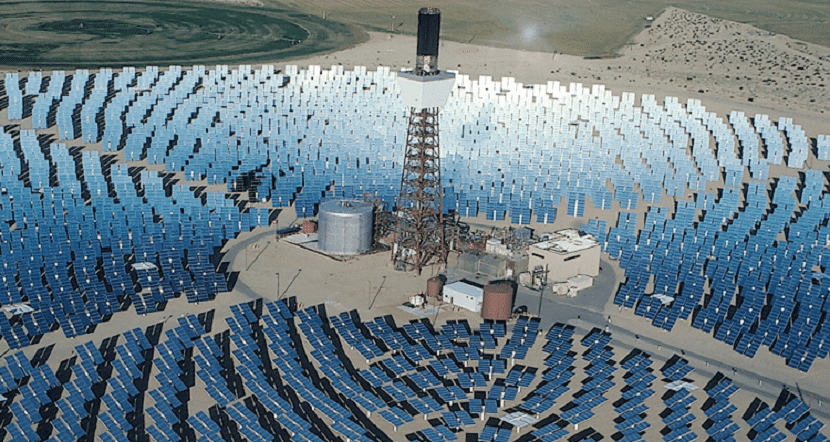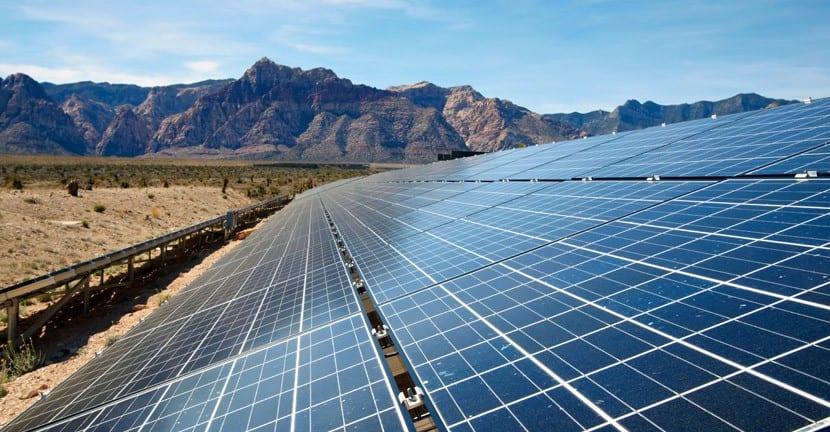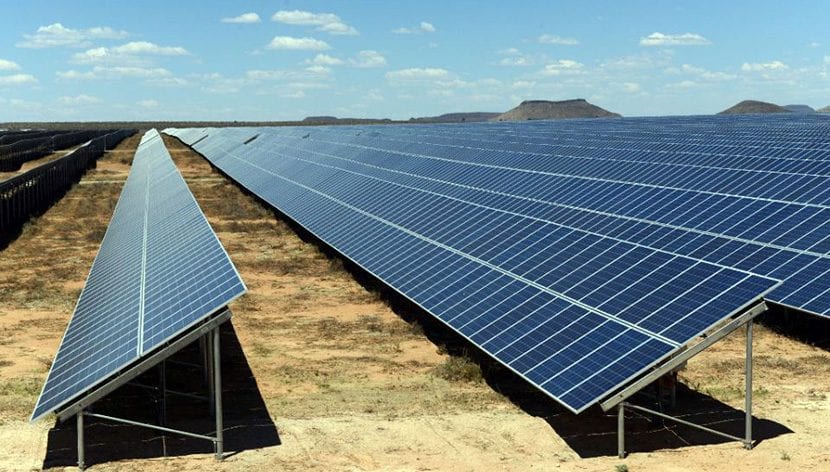
From practically no photovoltaic installations to early this decade to forecasts that ensure more than 40 GW installed upon completion. That is the panorama that appears before the eyes of the attentive observers of this wide geographic space, which covers the entire territory to the south of the Rio Grande –one of the border limits between the United States and Mexico– and southern Chile. Mexico, Brazil and Chile lead this «green fashion», but Argentina and Colombia are expected to join shortly.
A report by GTM Research, entitled Manual de la Fotovoltaica de América Latina, argues that in addition to reaching the aforementioned capacity, this year the region is expected to increase its share of global demand for photovoltaic energy by more than 6,2%, substantially higher than the one observed last year when it was 2,4%.
There are several points cited that justify the basis for this great photovoltaic boom in the region: the fall in solar energy prices in Latin American auctions; the early start-up of several plants under construction in Chile, Mexico and Brazil; that about half of Latin American photovoltaics will be installed this year in Mexico, and that Latin America will reach 10% of the global demand for solar energy in 2020.
The fall in photovoltaic prices
Distributed generation is gaining more and more market share Latin American photovoltaic, with a focus on Mexico and Brazil, where net metering and other incentives are in effect. However, it is from large facilities that the market is driven due to a rapidly declining price trend.
The energy auction held in Chile in August last year could also mark a turning point. There a new global low was reached, at $ 29 per megawatt hour (US $ MWh). It helped a lot that 2016 was a year with little rain, which caused the drop in hydroelectric generation and a higher average price of the central electricity grid. It also strengthened the confidence of other project developers so that they can get better benefits in future projects.

In Mexico, where it was doubted whether solar could compete with other renewable energies in price, lto photovoltaic reached levels as low as 33 u $ s MWh. Nor should we forget El Salvador, where prices have been falling drastically in recent years, and where photovoltaics have even surpassed wind power. This group is joined by Argentina, where the recent tenders of the RenovAR Program promoted by the Government awarded awards to photovoltaic projects that averaged 60 u $ s MWh, a price that is expected to be reduced even to 50 u $ s MWh in the next, imminent calls for bids.
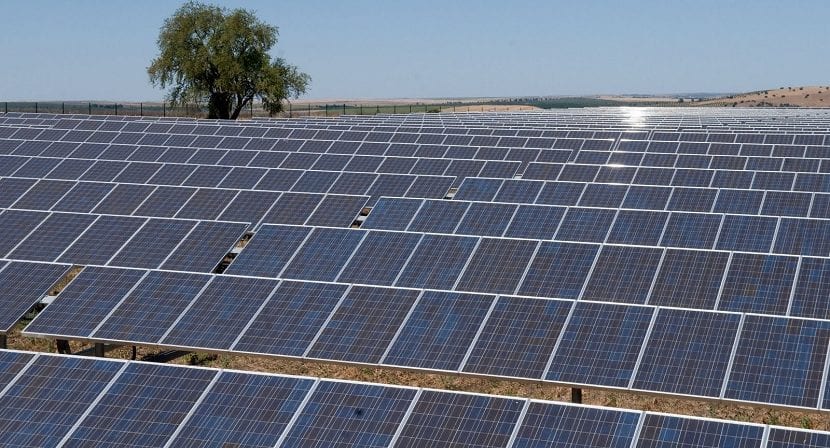
Low prices are also a handicap for developers, is sustained in the GTM report, because they try to finance projects with a low rate of return. However, it is expected that the introduction of tax reforms, partnerships with development banks and funds for specific renewable projects, and economic recovery at a broader level, help sustain regional investment in renewable energy in 2017.
Countries in the lead
All this panorama of falling prices in photovoltaic technology together with the simultaneous increase in electricity demand, has given rise to the development of many projects, in different phases of execution, dIt goes from contracting to the phase prior to entry into operations.
Chile is currently the leader in installed photovoltaics in Latin America, according to the GTM Research report, with 1.807 MW in operation, 3.250 MW under construction and 2.680 MW contracted, Although these are data that differ from those provided in its latest newsletter by the Chilean Renewable Energy Association (ACERA), which sets those numbers at 1.673 MW in operation and 1.219 MW under construction. According to industry analyst and report author Manan Parikh, this will be a difficult year, however, due to what he called an "already congested network."
It also ensures that Mexico has the highest contracted photovoltaic capacity in the entire region, with more than 4 GW of solar energy until the 2018-2019 biennium, a planned target of participation of renewable energies in the mix of 25% for 2018, 30% for 2021 and 35% for 2024.
The case of Brazil has its peculiarities. Although the country is going through a process of political and economic instability, is expected to remain among the group that leads solar in the region. For now, according to GTM, the Brazilian photovoltaic market added 267 MW in photovoltaic capacity in 2016, although it must be proven that if official data is citedFor example, the Monthly Monitoring Bulletin of the Electricity System of last January, published by the Ministry of Mines and Energy (MME), there are 83 MW connected to the grid, while in distributed generation, according to the same source, there was the same month mentioned 57 MW. In any case, the report indicates that the country will soon lose ground with respect to its neighbors if the tendencies Recent trends in the economy and demand are not reversed.
10% and 2020
Against this background, the report by GTM Research argues that "the Latin American market is on the way to growing exponentially", with a cumulative forecast of 41 GW of demand for photovoltaic energy installed between 2016 and 2021. Annual installations are on the way to doubling in the same period, so by the end of the decade it is expected that Latin America represents 10% of the global demand for photovoltaic energy.
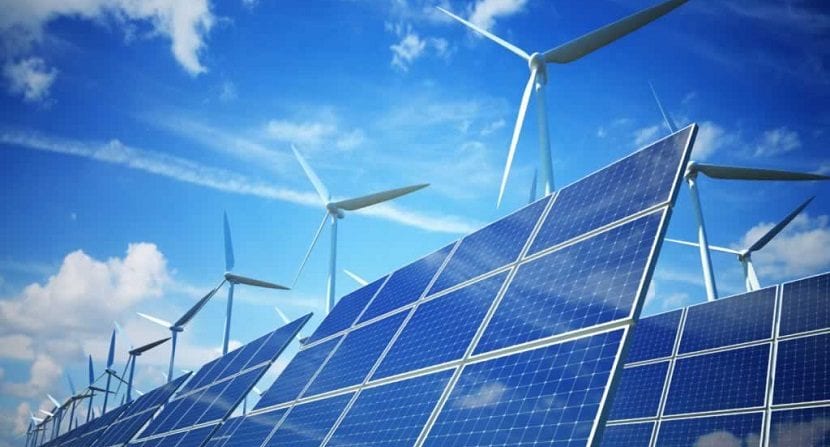
Of course, the report records a couple of negative influences: on the one hand, financing for projects with a low rate of return could continue to be a barrier for developers; on the other, the depreciation of currencies in Mexico and Brazil could also influence trends in the opposite direction.
The Boom in Mexico
Last year, Mexico began a process of auctions of renewable energies of great importance, something remarkable for a country that during decades it has been one of the important players in the field of oil production.

In this context, there were doubts about whether this energy transition proposal would be beneficial for photovoltaics, as long as it would be able to compete with other energy sources such as wind and natural gas. But these apprehensions were put aside when the results of last year's March and September auctions were blacked out. PV emerged as the big, overwhelming winner in both, with 4,2 GW of capacity at prices as low as $ 33 per megawatt hour.

Other elements help to be optimistic about the North American country. For example, supply auctions undertaken by electric utilities, and especially distributed generation, supported by recents new net metering and billing regulations.
article source: http://america.energias-renovables.com/fotovoltaica/el-boom-fotovoltaico-20170421
